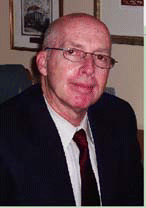We found the flexible fiberoptic CO2 laser to be ideally suited for head and neck oncologic surgery, said Dr. Holsinger. In our hands, it performed equally as well as the line of sight, or free-beam, CO2 laser. It allowed us to use the flexible CO2 laser to get oncologically sound resections with less time.
Explore This Issue
April 2007He also added that it is also expected that use of the flexible laser will reduce patient pain, but prospective analysis of this is still under way.
Although the flexible CO2 laser has been called an emerging technology by some, for Peak Woo, MD, of the Grabscheid Voice Center at Mount Sinai Medical Center in New York, one of the coauthors of the study on the CO2 waveguide with Dr. Shapshay, the flexible CO2 laser is not properly called a new emerging technology. It is not new, he said. It is still CO2 laser surgery-you’re just using a new delivery technology. In that way, the application, although novel, should not be considered radical. The only difference is the method of delivery. The one is through a fibroscope that does not need anesthesia and the other is through an operating microscope, which requires anesthesia.
As an otolaryngologist who deals primarily with head and neck cancer, Dr. Holsinger did clarify that although general anesthesia is indeed not needed with the flexible CO2 laser for many benign lesions of the larynx, and particularly for lesions of the vocal cords such as respiratory papillomas, general anesthesia is required for treatment of malignancy using the CO2 laser.
Pulsed Dye Laser (PDL): The Golden Age of Laryngology
According to Peter C. Belafsky, MD, MPH, PhD, Director of the Center for Voice and Swallowing at the University of California, Davis, a new era of laryngology has begun-and the instrument driving it is the pulsed dye laser (PDL). The pulsed dye laser is a safe and effective tool to treat a variety of laryngeal pathology through a flexible laryngoscope in the office without anesthesia, he said. This instrument ushers in…the golden age of laryngology.
 The CO2 laser is the ‘workhorse’ for the otolaryngologist because of its precise soft tissue interaction with minimal collateral damage.
The CO2 laser is the ‘workhorse’ for the otolaryngologist because of its precise soft tissue interaction with minimal collateral damage.
-Stanley Shapshay, MD
With highly vascular selective properties that allow the laser to target blood vessels within the vocal fold while sparing normal laryngeal tissue, the PDL acts as a smart laser, said Dr. Belafsky, adding that its efficacy has been well established in treating a number of laryngeal abnormalities such as laryngeal papilloma, polyps, varices and ectasia, leuoplakia, and dysplasia.
Leave a Reply